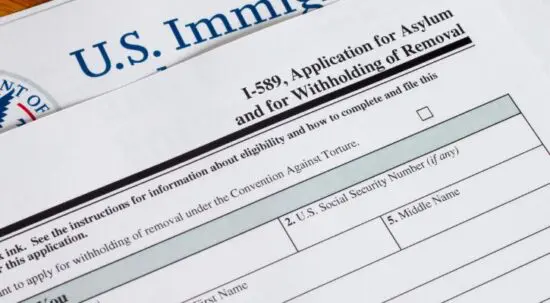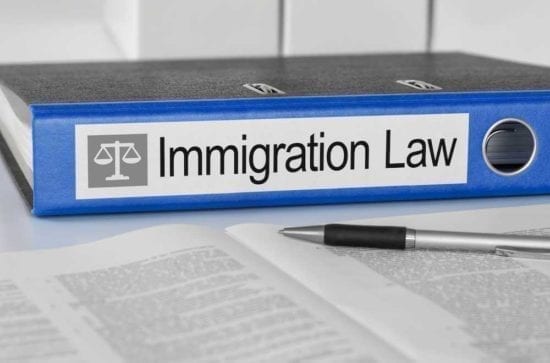What is asylum?
Asylum is a form of protection that allows you to stay in Canada. Applying for asylum in Canada is also called making a refugee claim. Asylum seekers or refugee claimants are different from resettled refugees.
(https://www.youtube.com/watch?v=RYiDM0LZ5pM)
You can apply for asylum in Canada if you are a convention refugee or a person in need of protection.
- A convention refugee is someone who fears persecution in their home country based on their race, religion, nationality, political opinion, and social group.
- A person in need of protection is someone who fears persecution or danger if they are sent back to their home country (or the country where they normally live).
- Persecution can include serious physical or emotional harm, torture, detention, and threats.
What are the benefits of asylum?
When you are granted asylum you can:
- Stay in Canada legally with protection from detention and deportation
- Ask for asylum for your spouse and children
- Work and study in Canada
- Travel outside Canada
- Apply to become a permanent resident and citizen in Canada
- Get healthcare and resettlement support, including financial help, language training, employment help for up to one year
Can I seek asylum at the Canada-United States border?
Generally, immigrants from the United States cannot apply for asylum at the Canadian-United States border. Canada has an agreement with the U.S. that requires people to make a refugee claim or asylum claim in the first safe country they arrive in. This is called the Safe Third Country Agreement (STCA).
- The STCA applies to asylum seekers at official and unofficial border crossings. If you travel through the United States and cross into Canada at a land border port of entry or by train, you cannot make a refugee or asylum claim as you enter Canada.
- The STCA is extended across the entire land border. This now includes unofficial border crossings such as Roxham Road between Quebec and New York. You will be turned away and instructed to make your claim in the United States.
- The STCA also applies to asylum seekers or refugee claimants who cross the border and file for asylum less than 14 days after their arrival.
- If you were denied asylum status in the United States and fly to Canada, you will also be turned away from the airport.
| Similarly, if you travel through Canada first and then enter the United States, you cannot generally apply for asylum at the border in the United States. You will be turned back to Canada unless you qualify for an exception. |
Are there exceptions?
Yes. There are exceptions to the STCA. You can apply for asylum in Canada at the border if:
- You have a family member who is a refugee, protected person, permanent resident, or citizen of Canada.
- You are an unmarried minor (under 18) and do not have a mother, father, or legal guardian in Canada or the U.S.
- You have a valid admission document such as a Canadian visa, work permit, study permit, or travel document.
- You have been charged or convicted of a crime subject to the death penalty in the U.S. or another country. You must not be a security risk, or danger to the public, or have violated serious crimes or human or international rights.
The Safe Third Country rule also does not apply if:
- You arrived in Canada via an airport or seaport
- You are a U.S. citizen or a stateless person who has lived in the U.S. for a long time
You still have to meet all other requirements to make an asylum claim in Canada.
Can I seek asylum if I am already in Canada?
Yes. The Safe third country rule only applies to asylum seekers at the Canada-U.S. border. You can claim asylum at an IRCC office or online if you are already inside Canada. You can apply even if you passed through the U.S. first but you must apply after being in Canada for at least 14 days.
What are the requirements?
To seek asylum in Canada, you must:
- Be physically in Canada
- Be a convention refugee or a person in need of protection
- Not have traveled through a safe third country (USA)
- Not have made a refugee or asylum claim in another country
- Not have committed certain crimes or are considered a threat to Canadian security
How can I apply for asylum?
You can apply for asylum in Canada if you meet the requirements.
In-person
You can request asylum if the STCA does not apply to you. You can apply for asylum in person at a port of entry upon arriving in Canada. A port of entry includes all airports, seaports, or land borders.
A border services officer will ask you to fill out an application. You can also make an asylum claim at an IRCC office.
Online
If you are already in Canada, you can make an asylum claim online. You will have to create an account to use the IRCC portal.
What happens after I file my application?
Canada Border Services Agency (CBSA) or Immigration, Refugees and Citizenship Canada (IRCC) officials will review your application and will ask you questions about your claim. You will have to get biometrics taken, submit other documents, and complete a medical exam.
- If your claim is eligible, immigration officials will refer you for a hearing before the Immigration and Refugee Board of Canada (IRB). You will have to complete and file a basis of claim form with the IRB. During your hearing, you and any witnesses will have a chance to testify about your claim.
- If the IRB approves your claim, you will get protected person status and will be able to apply to become a permanent resident in Canada.
- If the IRB denies your claim, you will have to leave Canada. You may appeal your case.
- You can get resettlement support, healthcare, and financial help while waiting for your hearing. You can also apply for a work permit or study permit while waiting for a decision.
How can I get legal help?
An immigration lawyer or legal representative can help you review your options and complete your application. They can also help you prepare for your interview and represent you at your hearing. You have a better chance of getting asylum with legal help.
Find a list of organizations that offer free or low-cost legal services help:
- Asylex – Canada Pro Bono Directory
- Canadian Bar Association – Pro Bono Resources in Canada
- Welcome to Canada – find information and services
Find other helpful Canadian resources for new immigrants and refugees.
| There are other programs that allow certain people to immigrate to Canada. You can apply for family sponsorship, employment, or another status if you meet the requirements. |
The information on this page comes from Government of Canada and other trusted sources. We aim to offer easy to understand information that is updated regularly. This information is not legal advice.




